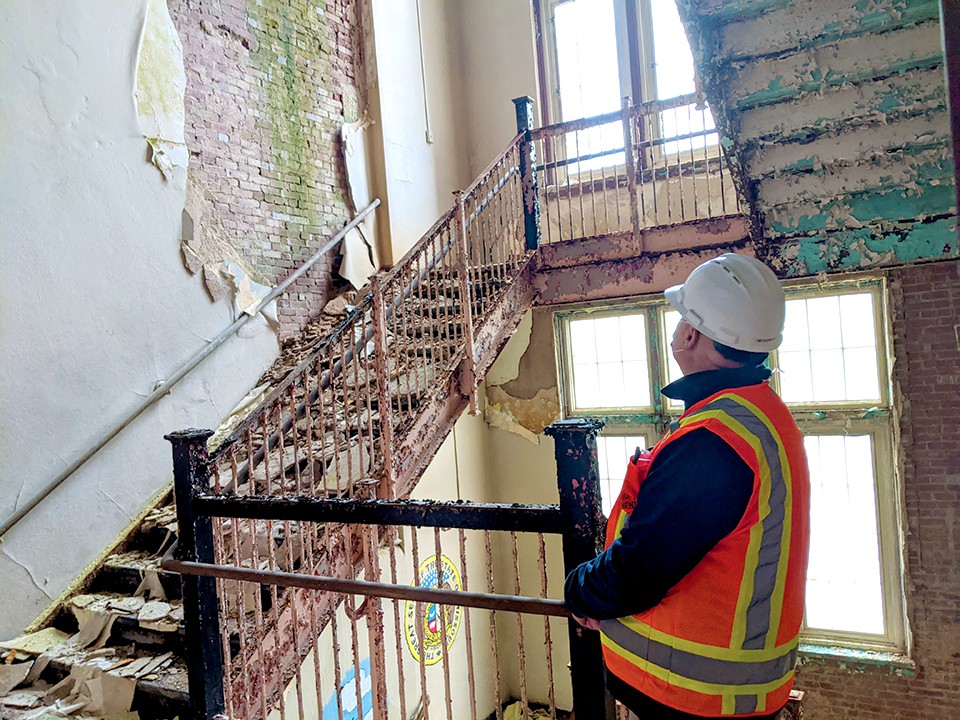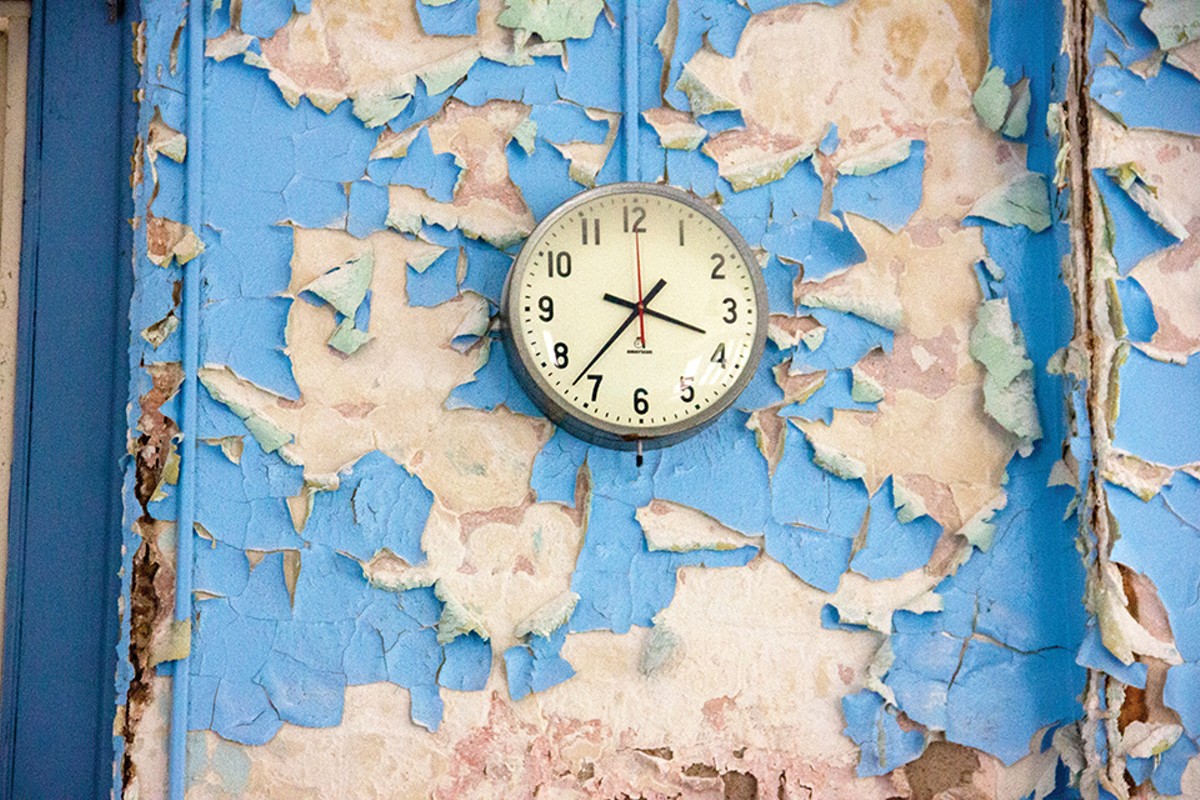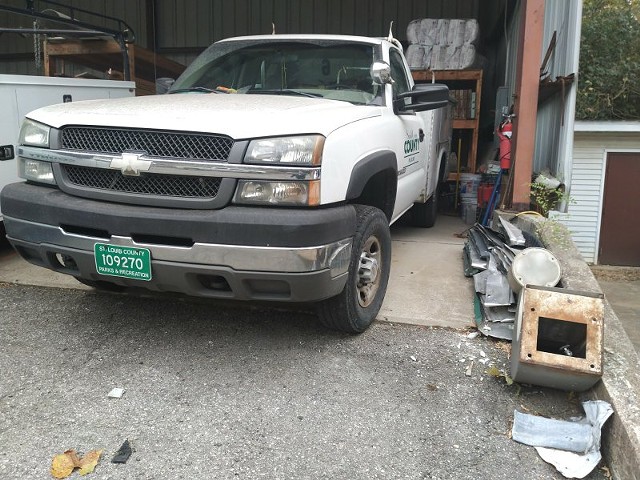
Indeed, by the time Masiel's crew started renovations at Lyon, a new wave of school closings was on the horizon. In December 2019, for the first time in St. Louis Public Schools' history, state data revealed that the district had fallen below 20,000 full-time K-12 students.
News of that ignominious benchmark was first reported by the Post-Dispatch's Blythe Bernhard and Janelle O'Dea. The December 12, 2019, story laying out the brutal facts facing the disctrict featured an ominous prediction attributed to a district spokeswoman:
"Any St. Louis school with fewer than 200 students — or about two dozen of the district's 68 buildings — could be under consideration for closure this spring," Bernhard and O'Dea reported.
School closures have long been a reality for St. Louis, and it reflects the trends that have seen SLPS go from being the largest school district in the state to the fourth in less than a decade. The district's last mass school closure occurred in 2010, shutting Lyon and ten other schools in a sweep that reduced the district's total number of operating buildings to 75.
During the next ten years, the closures continued intermittently. By 2020, SLPS has reduced its holdings to 68 buildings. (By comparison, the Rockwood School District — which last year opened a new 600-capacity school in Eureka — uses just 29 buildings to serve 21,000 students.)
In response to the Post-Dispatch's December 12, 2019, report, SLPS Superintendent Kelvin Adams sent a reassuring letter to the district's suddenly closure-panicked principals. The letter would be the subject of a Bernhard follow-up story the next day, as she reported the letter both "assured them that no schools have been identified for closure" and announced a series of town hall meetings to get community feedback on the district's future consolidation plans.
The town halls convened, and months passed. Then, along with everything else, the process was disrupted by COVID-19. In March, SLPS temporarily closed all of its buildings as the pandemic wreaked havoc on teachers, parents and students.
But the pandemic only paused the consolidation process. On December 1, 2020, Superintendent Adams walked to a podium in a school assembly room. Recommendations in hand, he faced the SLPS school board with an update about the district's stance on school closures.
"The notion of looking at our past is really a reminder of what we own, and what remains beyond our institutional reach," he began.
"It is our part tonight to remind the board, and the public, what they are responsible for."

Before presenting the board with his recommendations, Adams digressed into the storied history of St. Louis schools. He mentioned the Des Peres School in Carondelet, which in 1873 became the first publicly funded kindergarten in the United States. He praised Sumner High School, founded in 1875 as the first school for Black students west of the Mississippi, and which counts among its alumni Chuck Berry, Arthur Ashe, Tina Turner and Dick Gregory.
After a few more minutes of preamble, Adams finally dropped the bad news: His proposal called for closing outright a total of ten schools, including Sumner, while converting an eleventh, Carnahan High School, into a middle school. Seven of the schools to be closed are located in north St. Louis.
The proposed closures, effective 2021, would impact a total of 2,200 students and 299 employees, Adams said, though he contends staff members could join schools struggling to fill teacher and support positions. According to the proposal, the savings derived from the closures would go to increasing all school budgets, expanding access to elective courses and fully staffing the remaining schools with nurses, social workers, counselors, security officers and "family community specialists."
In his remarks to the board, Adams sounded all too aware of how the news was likely to land with the families of those students and staff now facing relocation.
"If the board and the public look at this as a way of destroying the past then I think there is a misnomer here," he said and asked that the community "not look at this like school consolidation or closing, but what we are doing to allot our resources to better support our schools."
But semantics aside, Adams also gave the board a 38-page report that set the crisis in stark red numbers. He'd tracked just how expensive inefficiency can be when it means operating a school built to hold 1,500 with a student body diving below 200. At Sumner, with an enrollment of 205, the cost is about $14,000 per student, Adams found; for Northwest's 187 students, the cost comes to more than $17,000.
See Also: St. Louis Superintendent: 'Losing a School Is Like a Death'
Adams faced pushback. During a question-and-answer session, board Vice President Susan Jones noted that Vashon High School would be the only neighborhood school left in north city under the proposed consolidation. Other board members raised concerns that charter schools, which are publicly funded but independently operated, would use the closures as an opportunity to absorb local students, further weakening the SLPS system.
But SLPS schools are missing too many students, Adams replied. Some buildings are already operating with multiple floors and wings shut down, and even then, the SLPS is failing to find enough teachers to staff its many schools. Adams argued that the district's low salaries make it "incredibly hard to recruit people." As an example, he described an SLPS principal "at one of our premier schools" who had been pressed into service as a math teacher earlier this year when the person hired for the job "left a week before school started."
The board meeting lasted more than two hours, with several members voicing concern about whether the scheduled vote for December 15, just two weeks later, would give the community sufficient time to respond and prepare.
For his part, Adams pressed for quick action, and reminded the board of the town halls that had been conducted in January and February. He pointed to the stark numbers on enrollment, reflecting the underlying reality of the economic and social divisions between St. Louis' north and south — and the decades-long pull of population away from north city. "Resources have been divested away from this area of the city, and we bear the brunt of it," Adams said, but he added, "We can't walk away from facts."
Still, Adams described the proposal as a kind of compromise, one that would keep open several underperforming schools in neighborhoods that would otherwise lack any school presence.
"Frankly, I'm giving you ten schools," Adams told the board. "I could have made recommendation for twenty schools, very easily."
He paused and repeated himself: "Very easily."






